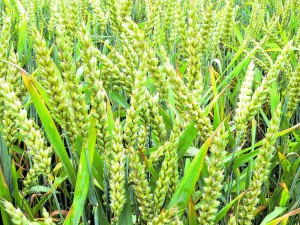Growing Grains in the Northeast
By Deb Heleba
Farmers throughout the Northeast have been growing grains for animal feed on dairy farms for years, although cereal grains have not been grown on a large scale since the 19th century. Back then, wheat and other grains were large parts of the agricultural economy; in fact, in the 1880s, Vermont had been dubbed the “bread basket of New England” because of its high production of wheat.

Durum wheat was the wheat most commonly grown in ancient Israel.
Within the past 10 years, demand for locally grown grains of all types—from wheat and oats to barley and rice—has drastically increased across the Northeast due to interests in producing more home-grown livestock feeds and diversifying farm products to meet growing consumer demands for local products.
As a result, farmer organizations, local mills and malt houses, and on-farm research trials have been sprouting up to support the renaissance of a small grains industry in our region.
One example is the Northern Grain Growers Association. Created in 2004, the association of farmers, bakers, agriculture service providers, and local food enthusiasts encourage and support the production, processing, and marketing of grains in Vermont and the surrounding regions. The association works closely with researchers at the University of Vermont Extension, and together have worked to rebuild a grain industry in Vermont. Some accomplishments include the following.
- Hundreds of grain varieties have been evaluated under the climatic conditions we experience here in the Northeast; these have included commercially available wheat varieties as well as heirloom wheat, barley, and oats. Numerous on-farm research trials have been conducted to identify optimum weed control strategies, fertility management, and planting dates for these grain crops.
- A university-based cereal grains quality testing laboratory has been established that provides analyses on quality parameters used by the baking industry as well as food safety screens.
- Culinary milling and baking trials have been performed as well as public tasting surveys to assess consumer preferences of local wheat varieties.
- Traditional, participatory breeding of five wheat crosses—some using the germplasm from 19th century varieties bred by UVM botanist Cyrus Pringle—have been implemented. These crosses have been grown out on-farm for more than six years where farmers have been improving them through annually selecting for favorable traits. A public release of these varieties may occur in 2015—the first wheat varieties developed in Vermont since 1901.
Visit the Northwest Crops & Soils Program at www.uvm.edu/extension/cropsoil/grains.
Similar farmer-to-farmer, farmer-to-baker, and farmer-to-researcher partnerships have formed throughout the Northeast region, including New York and Maine, all with the goal of supporting locally grown grains.
Grain trials and research have also been instrumental in the local production for local use biodiesel production model developed by the Vermont Bioenergy Initiative. UVM Extension research and collaborations with farmers active in the Northern Grain Growers Association have helped to identify the grain varieties which grow best in the Northeast that are richest in oil content which can be converted to biodiesel to supply fuel to farm equipment and feed for livestock. Learn more at www.vermontbioenergy.com.
Deb Heleba is Sustainable and Organic Agriculture Program Coordinator, University of Vermont Extension








Leave a Reply